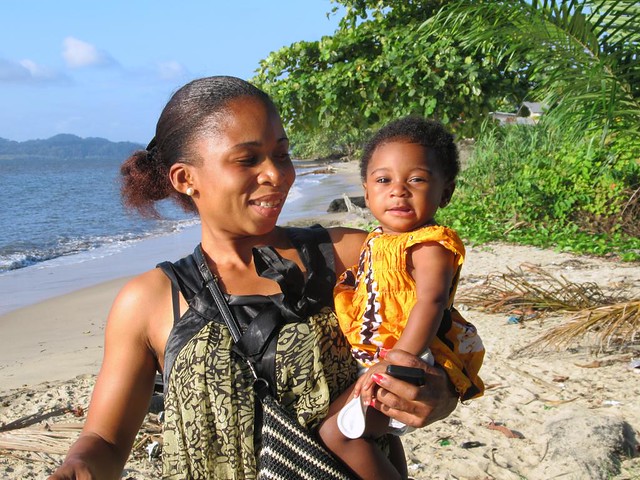Top 10 Facts About Living Conditions in Gabon

The West African country of Gabon is home to nearly 2 million people and shares a large part of its borders with The Republic of the Congo. While more politically stable than its neighbors, Gabon still struggles with extreme poverty and corruption. Keep reading to learn the top 10 facts about living conditions in Gabon.
Top 10 Facts About Living Conditions in Gabon
- Poverty: Even though Gabon boasts a per capita income four times the sub-Saharan average, as of 2015, 34 percent of the country still lived below the poverty line. Some estimates place unemployment at more than 40 percent. Of those who are employed, 64 percent are primarily employed in subsistence agriculture. By 2025, President Ali Bongo hopes to move Gabon into a “higher-tech, skilled economy,” which will potentially yield quality jobs beyond subsistence farming.
- Oil: Until oil was discovered offshore in the 1970s, Gabon primarily exported timber and manganese. As of 2012, Gabon had 2 billion barrels of accepted oil reserves, making it the fifth largest producer in sub-Saharan Africa. In fact, oil makes up 80 percent of exports and 45 percent of the GDP. Despite the money generated from oil, the hydrocarbon sector, unfortunately, doesn’t generate sufficient jobs.
- Clean Water: More than 97 percent of urban populations have access to clean drinking water while only two-thirds of rural populations do. Relatedly, only 43 percent of urban dwellers and just below one-third of rural inhabitants have access to quality sanitation. In 2018, the African Development Bank granted Gabon a fund of $96.95 million to improve the water deficit in its capital Grand Libreville by expanding the drinking water infrastructure into Greater Libreville and other municipalities. The goal is to have sustainable universal access to drinking water and sanitation by 2025.
- HIV/AIDS: As of 2017, 56,000 people in Gabon were living with HIV/AIDS. That same year, 1,300 people died from causes related to HIV/AIDS. This, however, is a decline from 2003 when 3,000 people had died of HIV/AIDS-related causes. Since 2010, new incidences of HIV have dropped by 50 percent while the number of AIDS-related deaths has fallen by one-third.
- Leading Causes of Death: In 2007, HIV/AIDS was the leading cause of death in Gabon. However, as of 2017, that number had fallen to fifth place, being overtaken by ischemic heart disease and lower respiratory tract infections as the top two causes of death. Although from 2007 to 2017, Malaria had risen to third place in deadliness. In 2017, there were more than 35,000 confirmed cases of malaria and 218 deaths.
- Corruption: Gabon has been relatively stable politically since gaining independence from France in 1960 and electing El Hadj Omar Bongo Ondimba in 1968. President Omar Bongo ruled for 41 years until 2009 when his son, Ali Bongo Ondimba, won the presidential elections. But, within this relative stability, dissent and distrust had begun to surface. The elder Bongo’s re-election in 2002 was riddled with allegations of electoral fraud. In 2016, when the younger Bongo was reelected, the country erupted into riots which resulted in the burning of the parliament building. The opposition, as well as international election observers, flagged the election results as suspicious, but Gabon’s Constitutional Court ruled in favor of Ali Bongo Ondimba extending his mandate to rule until 2023. In January of 2019, while President Bongo was in Morocco on an extended stay, several soldiers attempted a coup. They were unsuccessful and ultimately arrested.
- Education: According to the Education Policy and Data Center’s 2018 National Education Profile, 90 percent of primary school-age children were attending school. Literacy rates for young adults ages 15-24 were at 89 percent for females and 87 for males. This shows impressive improvement from 1985 when literacy rates were much lower, 53 percent for women and 70 percent for men.
- Maternal Mortality: The average woman in Gabon has about 4 children. In 2015, 291 women died out of 100,000 live births. As of 2018, there was still only one physician for every 3,000 people; therefore, complications from pregnancy and delivery can often go undetected and untreated. While still distressing, this maternal mortality rate represents a marked improvement from 1996 when it was 403.
- Infrastructure: In the 2013 World Economic Forum Competitiveness Report, Gabon ranked 112 out of 148 countries for quality of infrastructure. While roads are often impassable in the rainy season, railroad infrastructure had performed substantially better, coming in at 72 out of 148. Gabon has “one of the highest urbanization rates in Africa. More than four in five people live in cities.” In fact, 59 percent of the population lives in the country’s two dominant hubs: Libreville, the political capital and Port Gentil, the heart of its oil industry.
- Life Expectancy: In the 1980s, women were only expected to live into their early 50s and men only into their late 40s. Improvements in healthcare among other factors have extended life expectancy for women into their 70s and for men into their mid-60s. Furthermore, the mortality rate for children under the age of five was cut in half since 1990 when 80 out of 1000 children died. In 2017, that rate was approximately 40.
It is evident through these top 10 facts about living conditions in Gabon that there have been dramatic changes in the quality of life. Hopefully, Gabon will reach its drinking water and sanitation infrastructure goals for greater Libreville by 2025. It is through initiatives like this that Gabon will continue to improve the standard of living for those in the country.
– Sarah Boyer
Photo: Flickr
